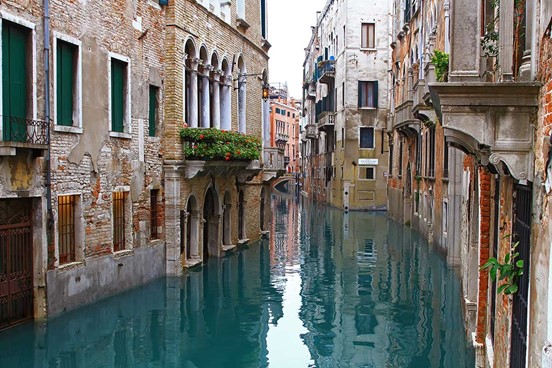These canals you are on now are not officially called “canale” in Venice but “rio”, which means “river” in Italian. There are about 170 of these rii that form the sinewy web of the city, through which only small boats can pass. Venice was and still is, therefore a collection of small islands which are connected by the 340 bridges around the city, without which it would be impossible to walk around. Building a city upon marshy waters might seem bizzarre to outsiders and a question that puzzles many visitors is: what’s under the city’s buildings? The answer is simple: stilts. Venice in fact is all built on wooden stilts, fixed in the sandy ground below, which is how the first inhabitants built their houses on what must have been an inhospitable area. Although the water is not the cleanest, it is replaced every six hours by the tide, which flows in from the rivers on the mainland, assuring a constant reflux of the waters in these canals.






